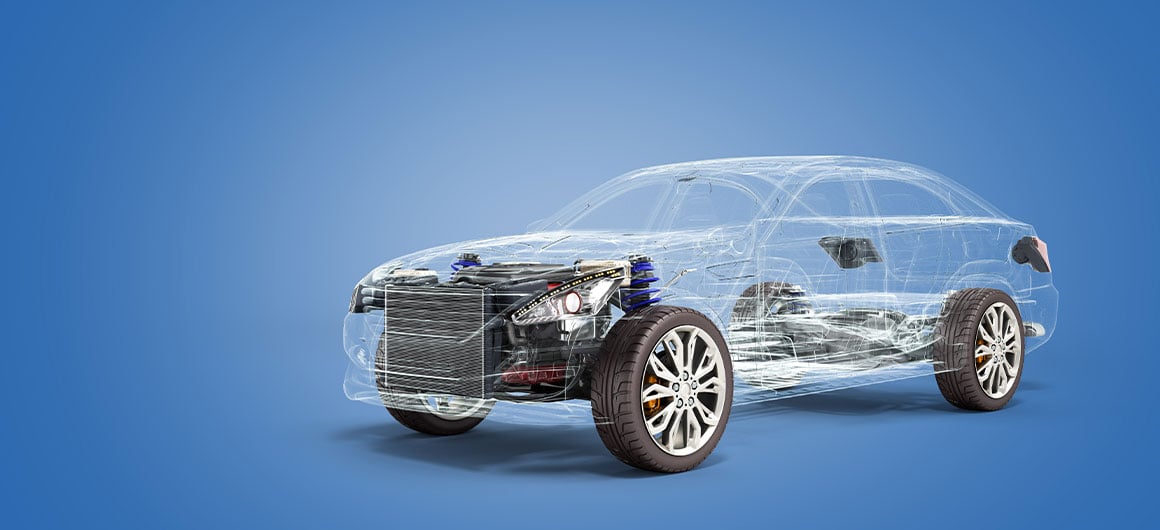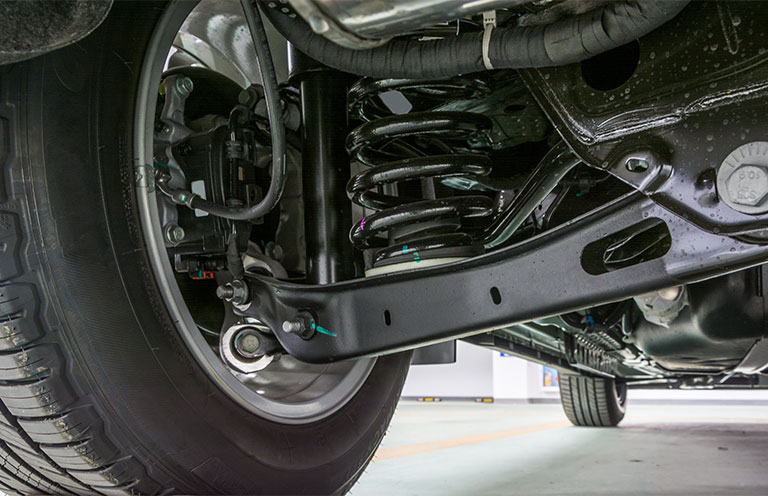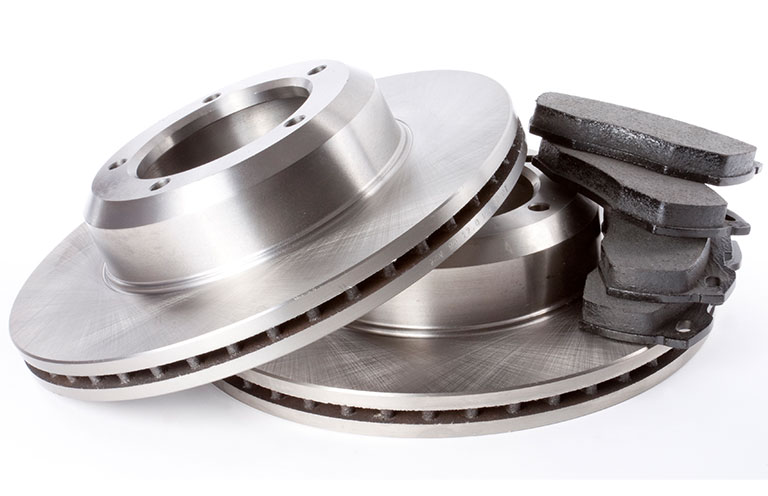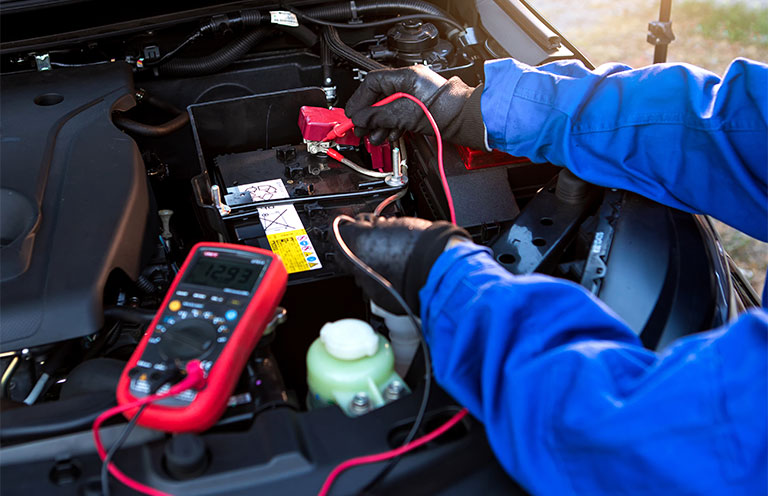Car Parts and What They Do: A Guide to What’s Under the Hood
Knowing how your car works can help you maintain and operate it more efficiently


Most drivers know how to start their car, drive it, and use its basic features. But when it comes to car parts and what they do, including how these unseen parts keep them safe on the road, many rely on a trusted mechanic.
With 30,000 parts in a typical vehicle, it's no wonder that many car owners aren’t familiar with the names and functions of all the components. Understanding car parts and what they do, however, can be empowering. This knowledge will help you diagnose problems on your own and can save you money on unnecessary repairs.
Think of the following information as your cheat sheet: We'll break down common car parts, explain what they do, and help you gain a better understanding of how modern cars work.
The engine
Piston
The piston is a key part of the car’s engine. Its main job is to take the force from the explosion of fuel and air inside the engine’s cylinder and use that force to move up and down. This motion turns the crankshaft, which then helps power the car’s wheels.
Valve
Valves are located above each cylinder and control the flow of air and fuel into the engine before ignition. After the fuel and air mixture ignites, the valves open again to release exhaust gases.
Fuel injectors
Fuel injectors are electronic nozzles that control how much of fuel enters the engine’s cylinders. They mix the fuel with air to create the explosion needed to power the engine.
Transmission
The transmission, or gearbox, is the part that transfers power from the engine to the wheels, allowing your car to move.
Oil pump and filter
The oil pump is powered by your engine's crankshaft and circulates oil to keep the engine cool and its parts lubricated. The oil filter removes contaminants and debris to prevent damage and buildup. Together, these parts keep the motor running smoothly.
Water pump and hoses
The water pump, similar to the oil pump, circulates coolant through a system of hoses to keep the engine cool. These hoses connect the water pump to the engine and radiator, allowing the coolant to circulate and regulate the engine temperature.
Spark plugs and ignition coils
Within each cylinder, there is a spark plug timed to ignite the fuel-air mixture and create the explosion that powers the engine. The ignition coil takes power from the battery and produces the high voltage required to power the spark plugs. For most vehicles, spark plugs need to be replaced every 80,000 miles, though many factors, such as plug and vehicle type, affect this lifespan.

Steering and suspension components
Shock absorbers
These components use a combination of hydraulics and springs to control the up-and-down movement of your vehicle, making the ride smoother. They attach to the car’s chassis at one end and connect to a control arm or suspension knuckle near each wheel. As your car moves over bumps or rough patches in the road, the shock absorbers help absorb the impact, making the ride more comfortable. Shocks usually last between 50,000 to 100,000 miles, but driving habits and road conditions can play a big part in their lifespan.
Struts
Similar to shock absorbers, struts act as a damper to smooth out the ride, but they’re lighter and take up less space. Additionally, struts provide structural support for the car’s suspension. They help hold the springs in place and keep tires properly aligned. Struts are commonly used in front-wheel-drive vehicles, though some rear-wheel-drive vehicles also use them. For most vehicles, drivers can expect to replace struts every 50,000 to 100,000 miles, but factors like road conditions, vehicle payload, and driving style can all have a significant impact on this range.
Power steering pump
The power steering pump pressurizes hydraulic fluid, making it easier to turn the steering wheel. Without power steering, steering would require much more effort, especially when driving at low speeds or parking.
Rack and pinion
The rack and pinion system is a key part of a car’s steering. The “rack” is a straight gear, and the “pinion” is a round gear. When you turn the steering wheel, the pinion gear moves along the teeth of the rack, which translates the rotation into the side-to-side motion that turns the wheels, allowing you to steer the car.

Brakes and wheels
Brake pads
Brake pads are part of the braking system and are housed within the brake calipers. When you press the brake pedal, the calipers squeeze brake pads onto the spinning rotor to slow down or stop the car. Brake pads are usually made from a mixture of materials such as ceramics and Kevlar, which create friction to stop the wheels, while also minimizing heat buildup. Brake pads usually last between 25,000 to 65,000 miles, but lifespan can vary significantly based on vehicle type, driving habits, and the type of material in the pads themselves.
Rotors
Brake rotors are metal discs attached to a wheel and connected to the vehicle’s axle. Brake pads and calipers press against these rotors to help slow or stop the car as it moves. If cared for properly, brake rotors usually last between 30,000 to 70,000 miles, but this can vary dramatically depending on how aggressively you brake and the conditions in which you drive.
Calipers
Brake calipers are controlled by hydraulic brake lines and sit over the rotors. When you press the brake pedal, the calipers use hydraulic pressure to squeeze the brake pads onto the rotors, creating the friction needed to slow or stop the car.
Master cylinder
The master cylinder is a key part of the braking system. It converts the pressure you apply to the brake pedal into hydraulic pressure, which then forces the brake pads against the rotor. It also has a reservoir to hold brake fluid, which is needed for the system to work.
Bushings
Bushings are small bearing-like components that connect moving parts to stationary parts of the car, such as the frame. They help absorb shocks and reduce vibrations, making the ride smoother.
Brake lines
Brake lines are tubes that connect the master cylinder to the brake calipers. They’re filled with brake fluid, which carries the pressure from your foot on the brake pedal to the calipers, causing the brake pads to press against the rotors and slow down the car.

Electrical components
Battery
The rechargeable battery in a vehicle has a few important jobs. It provides the high-voltage power required to start the engine and also powers most of the car’s electrical systems, such as the headlights, dashboard, and internal electronics. Typically, a car battery lasts three to four years, but its lifespan depends greatly on a range of conditions, including climate, driving habits, and type of vehicle.
Alternator
The alternator is an electrical part connected to the engine. It converts some of the engine’s mechanical energy into electricity, which helps keep the battery charged and powers other electrical systems in the car while you're driving.
Starter motor
This electrical device uses power from the battery to turn the engine over when you start the car. It’s what gets the engine going and starts the process of the engine coming to life.
Solenoid
A solenoid is a coil of electrical wire that creates a magnetic force to convert electrical energy into mechanical motion. In cars, solenoids can be used to start the engine or help shift gears in the transmission.
Fuses
These are small safety devices in your car’s electrical system. They protect the car's electrical system from being short-circuited or damaged by sudden surges in current. If there’s a power surge or a short circuit, the fuse will “blow” to stop too much electricity from damaging the car’s components.
. . .
While this isn’t a comprehensive list of every part of your vehicle, it's a great starting point for understanding car parts and what they do. This knowledge can make conversations with your mechanic easier and help you make informed decisions about repairs and maintenance.
Also keep in mind that while these parts are found in most vehicles, they may not all be present in yours. Additionally, any estimations for a part’s lifespan or maintenance intervals are just that: estimations. Your individual vehicle, usual road conditions, and driving habits will all play a large role in how long your parts actually last before needing replacement. For details specific to your car, consult your owner's manual or a trusted mechanic.
